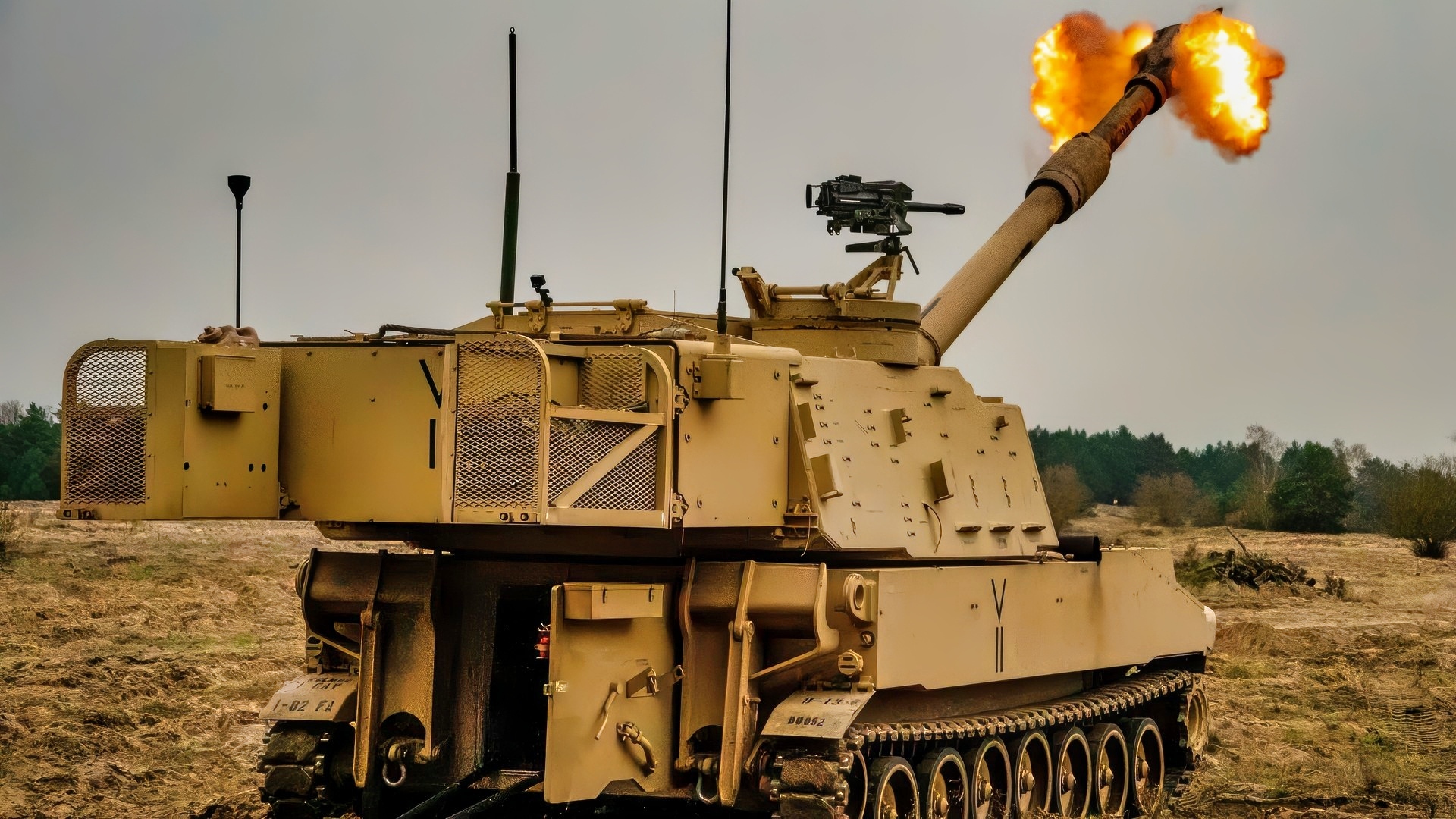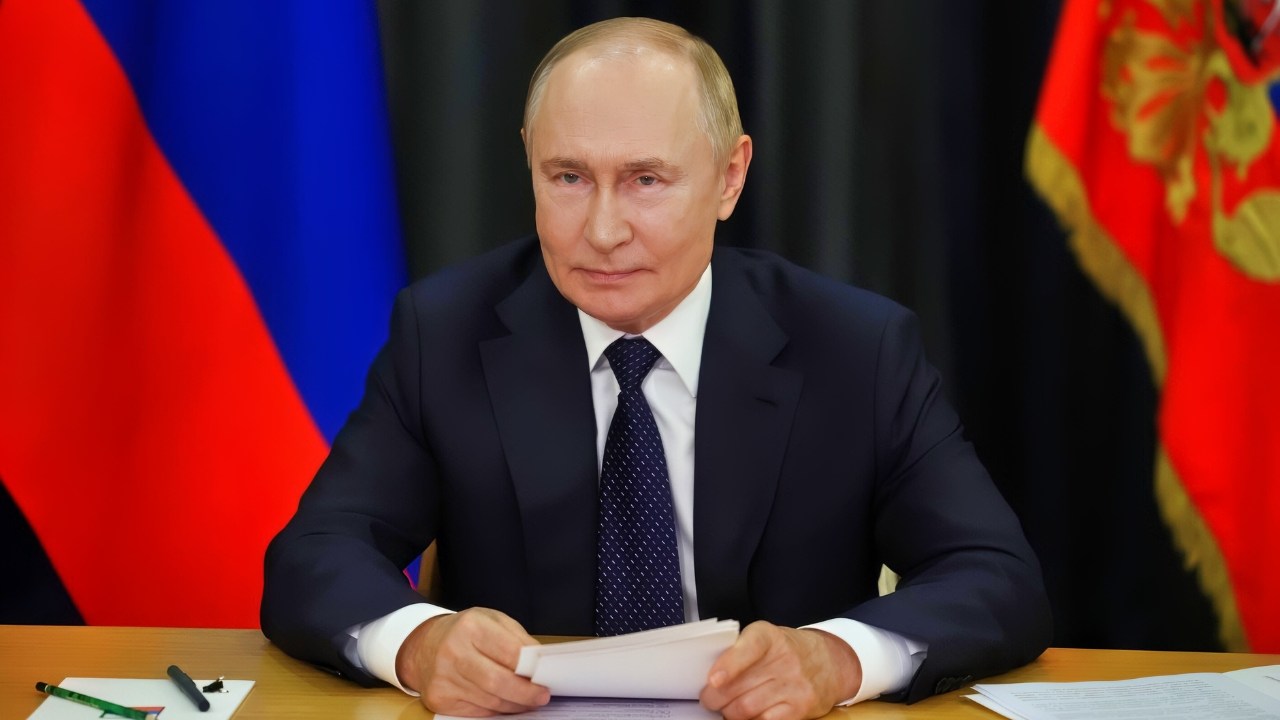Key Points and Summary – Russia’s autumn offensive has stalled, yielding only microscopic gains at a colossal cost in blood and metal. While Russia has adapted its tactics, it has not achieved a decisive breakthrough.
-Ukraine has also adapted, using defense-in-depth and robotic systems to survive the war of attrition.

President Donald J. Trump and President Zelenskyy in the Oval Office. White House Photo.
-This battlefield stalemate, where neither side can sprint, is making a “fortified freeze” along the current front lines increasingly likely
-While a ceasefire rewards aggression, a durable one—wired with strong deterrence and enforcement—could give Ukraine time to rearm and prevent a future Russian attack.
Could Putin Be Forced to Accept a ‘Fortified Freeze’ in Ukraine?
From a distance, Russia’s autumn offensive looks like a knockout punch; up close it lands like a glancing jab.
The front has shifted at the edges—villages taken, tree lines contested—but the sweeping breakthrough Moscow keeps promising never shows up. What we’re witnessing instead is less breakthrough than abrasion. And that raises the question: could Moscow be forced to accept a fortified freeze along the current front line?
There are those, of course, who believe that Moscow will be forced wo accept no such thing. To them, Russian battlefield adaptation looks like a war-winning evolution. And not without cause., Russian units have learned what works and what doesn’t. They push more small-group assaults under drone overwatch, level strongpoints with glide bombs, and flood the battlespace with cheap FPVs hunting guns and vehicles.
But, on closer inspection, these tactical innovations – as radical as they are – have not changed the fundamental battlefield calculus. Every step forward still exacts a toll in Russian blood and metal. In this “new phase” of the war, Moscow has figured out how to grind on somewhat more efficiently. But it has definitely still not figured out how to achieve a decisive battlefield victory over its Ukrainian foe.
This is in large part due to the fact that Ukraine has adapted too—adopting new tactics and technologies that position it to better fight and win the war of attrition it now finds itself fighting. The defense-in-depth is real, the rear-area harassment is persistent, and the quiet revolution is mechanical. Robotic systems now resupply, evacuate, breach, and sometimes coerce surrender. None of this makes trench warfare tidy. It makes it survivable. Sensors, jammers, loitering munitions, and rapid repair have become the coin of the realm, and the force that spends those coins smarter gets more combat power in return.

An M109 Paladin, assigned to 1st Battalion, 82nd Field Artillery Regiment, fires a round of high-explosive artillery during Dynamic Front on Forward Operating Site Torun, Poland, Nov. 19, 2024. Dynamic Front takes place from Nov. 4-24 in Finland, Estonia, Germany, Poland, and Romania, and demonstrates NATO’s ability to share fire missions, target information, and operational graphics from the Arctic to the Black Sea. It increases the lethality of the Alliance through long-range fires, builds unit readiness in a complex joint, multi-national environment, and leverages host nation capabilities to increase USAREUR-AF’s operational reach. Dynamic Front includes more than 1,800 U.S. and 3,700 multi-national service members from 28 Allied and partner nations. (U.S. Army photo by Spc. Julian Winston)
That same economy shows up in the strikes across Russia’s depth. Drones and missiles hitting refineries, depots, and power nodes don’t flip a switch at the front, but they do tighten the vice. Advance a kilometer if you can; your ability to fuel and feed the advance is quietly eroding. Russia hits back at Ukraine’s grid, and both sides absorb the pain, yet the net effect has tended toward offsetting damage rather than decisive advantage. The map doesn’t change because both machines can still run, even if neither can sprint.
Artillery sits underneath the whole contest. Ukraine’s shell shortage has moved from catastrophic to merely chronic as European and American lines expand and Kyiv spins up domestic production. Energetics and propellants remain a brake, and output still trails ambition, but the curve is finally rising.
Russia fires more, yet quality control, sanctions friction, and interdiction nibble at that edge. Neither side looks positioned to generate the ammunition surplus needed for sweeping offensives. That arithmetic points to a front line that prefers to hold.
If the battlefield is teaching restraint by attrition, politics are beginning to murmur about a window. Exhaustion thresholds, election calendars, and industrial ramp-ups are colliding with a tactical map that refuses to move on command. When neither belligerent can cheaply improve its position, strategy shifts from hunting decisive victory to locking in defensible reality. That is the logic of an armistice or durable ceasefire—not capitulation, not closure, but a way of freezing geometry while time does work that firepower no longer can.
The signals are faint but they’re there. Moscow alternates coercive diplomacy with maximalist rhetoric, testing whether a freeze can be framed on its terms. Kyiv rejects territorial concessions in public while arguing—correctly—that any pause must be shielded by security guarantees, long-range strike permissions, and industrial commitments that outlast political mood swings.
Western capitals, wary of both escalation and drift, are quietly gaming versions of “stop roughly along the current line, then bargain,” and asking whether verification, penalties, and layered guarantees could make such a stop hold. No one should confuse that with a breakthrough. It is, however, a more plausible conversation than it was a year ago.
If that conversation ripens, design will matter more than rhetoric. A durable ceasefire is a machine, not a mood. It needs monitored disengagement zones to reduce friction, reciprocal restraints on the most destabilizing strike systems, standing inspection and incident-prevention channels, and automatic, material penalties for violations.
Most of all, it needs deterrence wired into the frame: integrated air and missile defenses, replenishment pathways that survive political weather, training cycles that don’t pause when legislators argue, and an industrial base that grows regardless of headlines. That is the unglamorous scaffolding that turns a ceasefire from a breather into a shield.
Critics will argue—again with reason—that any freeze rewards aggression and invites a second bite.
The risk is real. The remedy is to raise the price of that second bite beyond rational calculation. If Ukraine’s air defenses thicken, its magazines fill, and its Western interoperability deepens under the umbrella of a verified ceasefire, then the attacker faces a worse fight later for the same ground. Break the agreement and own the escalation, the economic punishment, and the diplomatic isolation that follow. The lesson from past arrangements is not that ceasefires are folly; it’s that paper without enforcement invites abuse. Verification and consequence are the antidote.
For Russia, accepting a fortified freeze would be a public admission that the “special military operation” culminated short of its political aims. The alternative, though, is a long hemorrhage: more casualties, a stagnant economy, and a military machine that spends itself to stand still. For Ukraine, an armistice would not deliver justice or full restoration. It would deliver time—time to build magazines, expand air-defense density, harden infrastructure, and continue the deep-strike campaign that keeps Russia’s regeneration in check. In a war where defense scales faster than offense, time is not consolation; it’s strategy.
Which brings us back to the battlefield. Russia’s current push is dangerous and expensive, capable of local success but not a war-turner. Ukraine’s defense is resilient and clever, but it isn’t operating with bottomless resources. The lines are likely to freeze not because diplomats prefer tidy maps but because the battlefield imposes limits that politics must eventually respect. The prudent course is to shape that inevitability into terms that protect Ukraine’s sovereignty and limit Russia’s predation.
How the Ukraine War Will End: Exhaustion Creates Peace?
Wars end in many registers—rout, revolution, exhaustion, negotiation. This one, as of now, is trending toward exhaustion wrapped in negotiation. If the coming months look like the last—the knockout punch that keeps glancing off—then the question won’t be whether to discuss a fortified ceasefire, but how to build one that deters the next assault. That is not retreat. It is choosing the terrain where Ukraine can best defend what it has saved, and preparing the day when Moscow has to confront a simple fact: brutality can seize ground, but it cannot conjure victory.
About the Author: Dr. Andrew Latham
Andrew Latham is a non-resident fellow at Defense Priorities and a professor of international relations and political theory at Macalester College in Saint Paul, MN. You can follow him on X: @aakatham. He writes a daily column for National Security Journal.
More Military
The F-22 Raptor Stealth Fighter Still Haunts the U.S. Air Force
The U.S. Navy’s Big Nuclear Attack Submarine Mistake Still Stings
China’s J-20 Mighty Dragon vs. F-22 Raptor Stealth Fighter Summed Up in 4 Words
Why Is a U.S. Navy Aircraft Carrier Still Damaged 8 Months After a Collision?










